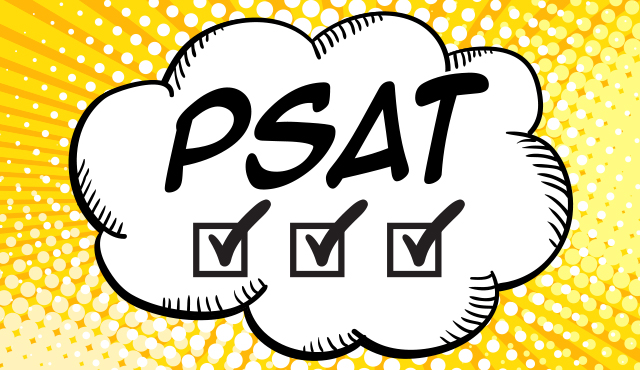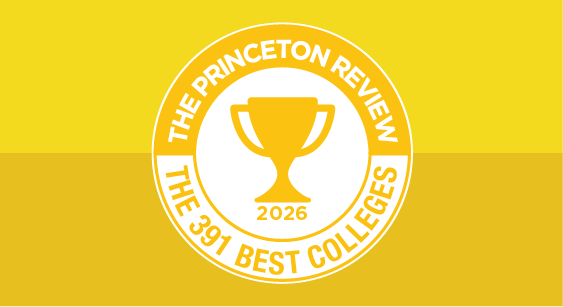
Once upon a time, the standardized test known as the PSAT was viewed as a mini-SAT. And it was, literally, a “mini” version of the exam—a full hour shorter than the SAT. That’s no longer the case.
In 2015, the College Board overhauled both the SAT and the PSAT, revising the structure and content of its full suite of assessments: the SAT as well as the PSAT 8/9, PSAT 10, and PSAT/NMSQT. While the PSAT 8/9. PSAT 10, and PSAT/NMSQT don’t directly affect college admissions decisions, these exams can make a big impact on your college prospects. Here’s what you need to know.Taking The PSAT Today
When folks talk about the PSAT, they typically mean the test students take during junior year. Its full name is the PSAT/NMSQT, which stands for Preliminary SAT/National Merit Scholarship Qualifying Test. Here’s a quick breakdown of the three PSAT varieties:
PSAT 8/9
This test is administered to eighth- and ninth-graders over the course of the school year (there is no fixed date). The PSAT 8/9 is twenty minutes shorter than the PSAT, clocking in at 2 hours, 25 minutes, and has five fewer Reading, ten fewer Math, and four fewer Writing and Language questions. It is also scored on a scale all its own: 240–1440.PSAT 10
This is the exact same test as the PSAT/NMSQT (more on that in a moment), except there’s no “NMSQT”; in other words, you can’t qualify for National Merit Scholarships on the basis of your PSAT 10 score. Like the PSAT/NMSQT, it’s scored on a scale of 320–1520, and is administered over the course of 2 hours, 45 minutes. Also like its junior-year counterpart, it’s got 47 Reading, 48 Math, and 44 Writing and Language questions. Unlike the eleventh-grade PSAT, however, the PSAT 10 is administered in the spring of sophomore year.PSAT/NMSQT
This is the test most people think of when they hear “PSAT.” Administered in the fall of junior year, it’s the exact same test as the PSAT 10—except that a sufficiently high score on the PSAT/NMSQT can qualify you for a National Merit Scholarship. The current version of the PSAT/NMSQT is a mere fifteen questions shorter than the SAT—five fewer questions in Reading, ten fewer in Math, and the exact same number in Writing and Language. The testing time of the PSAT is now just fifteen fewer minutes than the (essay-less) SAT. In short: The SAT and the PSAT/NMSQT are nearly identical. The main differences are in their duration and scoring (the PSAT is scored on a scale of 320–1520, whereas the SAT is scored on a scale of 400–1600). The biggest difference between the two tests, however, has nothing to do with format and everything to do with function: The PSAT is not used in college admissions. Period. This may lead you to ask yourself, “Why even bother with the PSAT? Why not just skip it and go right to the SAT or ACT, which is actually used for admissions?”Should You Take the PSAT?
In a word—yes. Here are four reasons why you should take the PSAT.1. You may have to. Most high schools require their students to take the PSAT in the fall of junior year (and many pick up the $16 cost), either for their own assessment or for a state requirement. Many schools additionally require the PSAT 8/9 and the PSAT 10. Check with your guidance counselor to see which ones you may need to take so you can prepare.
2. You can get a good sense of your future SAT score. The College Board purposefully gave these tests unique but equivalent scoring ranges, with the PSAT 8/9 going from 240–1440, the PSAT 10 and the PSAT/NMSQT going from 320–1520, and the SAT going from 400–1600. The College Board calls this a “common score scale” and claims that a 500 in Math (for instance) on any test would equate to a 500 in Math on any other test if the student took it on the same day. The common score scale can show your progress from test to test and enable you to compare score gains. The benefit of this common scale is that taking one or more of the PSAT suite of tests will give you an idea of what score you can expect to get on the SAT. It will also show you where your strengths and weaknesses lie.
3. You can target areas you need to practice for the SAT. Like the SAT, the PSAT tests break down your score into a variety of sub-scores, such as Words in Context, Command of Evidence, and Passport to Advanced Math. You can learn more about PSAT scoring here. Seeing how you rank in these different categories—during a low-stakes test—can show you where to focus your attention before the actual SAT rolls around. The College Board claims that just twenty hours of practice can raise your score an average of 115 points from the PSAT to the SAT.
4. Maximizing your PSAT score has benefits. As we mentioned above, the PSAT is also the National Merit Scholarship Qualifying Test. Its results are used to assign each student a Selection Index score. This is the result of taking the sum of the Math, Reading, and Writing and Language scores, then multiplying the result by two. Each section is scored from 8–38, so the doubled sum of the sections will range from 48–228.
A select few students who receive exceptionally high Selection Index scores will receive National Merit recognition as Semifinalists or Finalists, and even fewer will get National Merit scholarships. Before you think, “Sweet! Free money!” you should know that less than one percent of all test-takers get these scholarships. That being said, many schools and corporations offer additional scholarships to students who receive high scores on the PSAT. When signing up for the PSAT (or any of the other tests in the SAT suite), make sure you check the box indicating your interest in the Student Search Service. This free service allows the College Board to share your information with almost 2,000 schools and programs. Those looking to give scholarships to students with your qualifications might even reach out to you to let you know what they have to offer. The College Board claims that more than $255 million in scholarship money is available annually, so you have nothing to lose! (In fact, you might have more to lose by not opting in!)
One additional way that a strong PSAT score can earn you college dollars is slightly more indirect. A strong PSAT score is likely to portend an equally strong (or stronger) SAT score. High SAT scores can, in turn, help you get scholarships and grants for college. Studying for these standardized tests is one of the few ways that students can positively affect their financial aid packages.
Preparing for the PSAT
Once you’ve decided to take the PSAT, you should definitely prepare for it. If you take the PSAT 8/9 or the PSAT 10 and find that you score lower than you’d like, you’ll have some time to practice and boost your score. The timing is conducive to PSAT prep, as well. As we mentioned, the PSAT 10 is given in the spring of sophomore year, leaving the summer before the October PSAT during junior year open. That summer presents a great time for test prep. The more practice you do, the more comfortable you will be with all the tests, not just the PSAT. And your prep doesn’t need to be PSAT-specific, either. Since that test is so similar to the SAT, using SAT prep strategies is perfectly valid—especially because your ultimate goal is to earn a high score on the SAT (or ACT).There is one more bonus to doing PSAT prep over the summer: If your prep goes well and you see solid improvement on your practice tests, then you can consider taking the SAT in fall of junior year. If you feel ready, taking the SAT while the material is fresh can get you the score you’re aiming for. Then you can spend the rest of junior year focusing on other things—like taking challenging classes and finding your best-fit colleges.
Read More
Explore Colleges For You
Connect with our featured colleges to find schools that both match your interests and are looking for students like you.
Get Started on Athletic Scholarships & Recruiting!
Join athletes who were discovered, recruited & often received scholarships after connecting with NCSA's 42,000 strong network of coaches.
Best 391 Colleges
170,000 students rate everything from their professors to their campus social scene.



